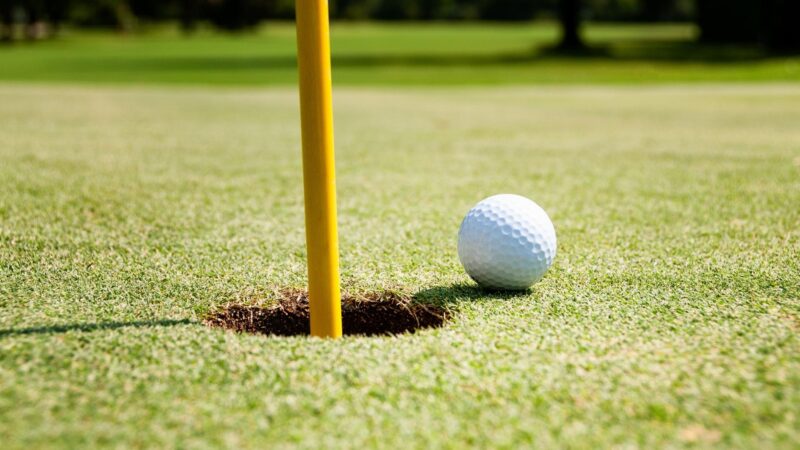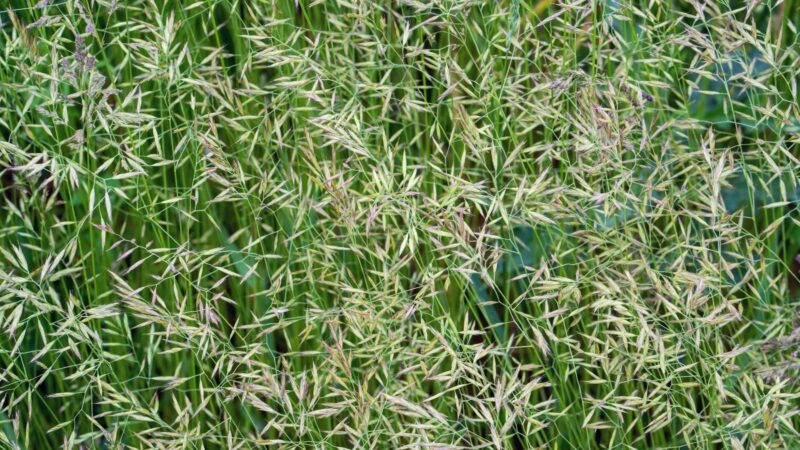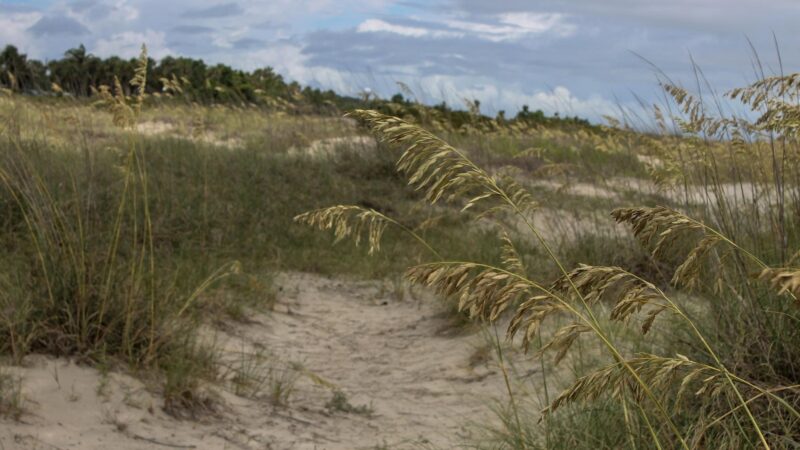Turfgrasses are important plants used for lawns, yards, and gardens, as well as sports fields, golf courses, parks, and commercial lawns. The most common species are Kentucky bluegrass, zoysia grass, and St. Augustine grass. Moreover, there is also the existence of creeping bentgrass, which is solely used for golf courses.
Creeping bentgrass is a lush green, fine-textured, and cool-season grass. It is used on golf courses and lawn tennis facilities due to its ability to form dense mats, which makes it easy to establish putts.
It also has low-mowing capabilities, which makes it ideal for maintenance. However, it is also considered a pesky perennial weed.
To know more about creeping bentgrass, its physical characteristics, what causes them to grow and spread, how to get rid of them and effectively prevent their emergence, and other interesting information, read further this article!
What Is Creeping Bentgrass?

Creeping bentgrass (Agrostis stolonifera) is a specialty, cool-season grass. It is usually used for golf courses greens, fairways, and tees, as well as lawn tennis greens and facilities.
It is seldom used as lawn grass since it is considered high maintenance and requires topdressing, frequent fungicide applications, fertilization, and mowing, especially during the summer season.
This species is adapted to cool and humid regions with sufficient sunny areas but is tolerant to light shade and low temperatures. As such, they achieve a lush green color during the summer and begin turning brown once the fall season starts.
Additionally, creeping bentgrass can also be considered a weed if it grows with other plants or if it begins encroaching on adjacent turf areas since it also competes for nutrients.
What Does Creeping Bentgrass Look Like?
Creeping bentgrass has flat and narrow leaves that are rolled in a bud, with leaf blades that are also flat and sharply pointed, with a ridged upper surface and a slightly creased lower surface. The width of its leaf blade ranges from 2 to 5 millimeters.
Its ligules are either blunt or rounded, finely irregular-toothed, and have a few hairs on the back. Moreover, its leaf collar is divided and unequally slanted at the sides and with an open sheath margin. The species lacks rhizomes and auricles.
How Tall Does Creeping Bentgrass Grow?
This grass can grow up to 1 meter in length. However, it is usually mowed at around half an inch or less for golf course tee boxes and fairways and 0.125 inches or less for putting greens.
What Causes Creeping Bentgrass?

The only way they could emerge in lawns and yards is when their stolons are dispersed by the wind from nearby areas that have the grass species planted or due to passing birds that happen to drop the plant’s runner. They can also be transferred via mowing equipment.
Creeping bentgrass stolons are aggressive growers and can spread easily in a given area. Once it fully spreads over a lawn, it can take over grasses and other desirable plants, as it is extremely competitive.
How Creeping Bentgrass Spreads?

Creeping bentgrass spreads by stolons. It has vigorous but shallow roots, and forms a layer of thatch or mat found above the soil line. The stolons are creeping and slender-shaped that produce long and narrow leaves.
The grass favors cool temperatures with sufficient humidity. That is why they are usually found and abundant in the Northeastern United States. In the South where they are used for golf greens or small acreages, they are usually propagated through its seeded varieties.
How to Get Rid of Creeping Bentgrass?
Cultural Control. Since the grass requires frequent irrigation, avoid watering it. During the rainy season, eliminate any surface runoffs to encourage overwatering and saturated soils. However, make sure to drain excess water on desirable plants. Additionally, you can encourage the growth of desired plants as quickly as possible to foster competition with creeping bentgrass.
Physical Control. If there are only a few patches of the grass present, you can try physically removing it using a sod cutter, shovel, or simply by hand-pulling if you have the time to spare.
Be sure to remove the entire plant, especially including its stolons and any other stray solons in the vicinity. Afterward, re-seed or sod with your desired turfgrass species or other plants.
Chemical Control. When getting rid of creeping bentgrass in small areas, apply a non-selective systemic herbicide as a spot treatment. Mature grass usually requires 2 or more applications spaced at 14-day intervals to guarantee complete eradication and control since regrowth often occurs. Once you have fully killed the grass, you can reseed or sod after.
Glyphosate is a common market herbicide that is effective at eliminating grass species. Make sure to cover desirable plants with a sheet of plastic or cardboard to avoid spray drift and accidentally killing them.
Tenacity (Mesotrione) is the most effective herbicide treatment to use against creeping bentgrass, with visual results (yellowing or wilting) seen rapidly. For best results, treat the grass with Mesotrione in 3 applications made in 14 to 21-day intervals.
Turfgrass researchers are currently investigating the effectiveness of selective herbicides such as sulfosulfuron for treating creeping bentgrass. However, it will likely require the skills of a professional pesticide applicator.
How to Prevent Creeping Bentgrass From Spreading?
Since creeping bentgrass is a perennial weed, here are ways in which you can prevent their growth once they start emerging in your lawn due to dispersed stolons:
Mulches. This is the easiest way to control perennial weeds. Mulching will prevent sunlight from entering the surface of the soil, which is greatly required for creeping bentgrass.
- Organic Mulches. Examples are grass clippings and pine bark. Apply a maximum of 3 inches onto the soil for effective control.
- Inorganic Mulches. These are synthetic materials such as black plastic and geotextiles. The disadvantage to using these is that they do not allow oxygen and water to pass through. However, geotextiles, such as weed barriers, are made of fabrics. This allow gasses and water to pass through, but they are more expensive than plastic.
Physical Removal. Hand-pulling works best for small raised beds and gardens. However, when you have a relatively larger lawn or garden, use a hoe and remove the weeds just below the surface of the soil. Make sure to hoe at a shallow depth since you can potentially damage desirable plant roots. Rotary tillers and cultivators can also work.
Vegetable Planting. This method can help increase the shade that creeping bentgrass receives as fully-established vegetables have extensive foliage. Observe close spacing when planting vegetables for the crop canopy to be shaded faster.
Carbohydrate Starvation. Start when the number of carbohydrate reserves in the creeping bentgrass is at its lowest. This is often in early spring. You can see this when the weed’s shoots begin to break the surface of the soil. At this period, till or mow the grass every 7 to 10 days until they stop emerging. Depending on the resiliency of the grass, you should continue doing this for 4 to 6 months.
Herbicides. For most lawns, yards, and gardens, a combination of physical removal and mulches can effectively control weeds. However, in some cases, such as having a greater planting area, the use of herbicides is warranted.
Apply herbicide pre-emergence or pre-planting for best results or in 2 applications at 14-day intervals. You can also apply it when the garden plot is fallow using glyphosate, then cultivated it afterward.
Is Bermuda Grass Creeping Bentgrass?
Bermuda grass (Cynodon dactylon) is a completely different turfgrass species and has a wider range of use from creeping bentgrass. It can be found in parks, sports fields, golf courses, lawns, and general utility turfs found in tropical and subtropical areas.
However, just like creeping bentgrass, it is also a vigorous weed that spreads through stolons and can compete with crops in irrigated or high-rainfall areas.
Is Creeping Bentgrass a Weed?
Creeping bentgrass is considered a cool-season, perennial weed when they aren’t grown for golf course use. When left untreated, they can compete for nutrients against other plants and can grow up to 1 meter in height.
They also make lawns look unsightly. They are characterized by flat patches on the ground and can grow thick and large amounts of thatch. It consequently causes lawn problems such as water unavailability to other plants.
What’s the Best Time to Treat Creeping Bentgrass?
The best time to treat and remove creeping bentgrass is around early June to mid-July, when it is actively growing.
Creeping bentgrass vigorously spreads through stolons that form a mat or thatch layer above the soil line. Its growth can be prevented by using mulches, physically removing them, planting vegetables, carbohydrate starvation, and the use of herbicides. The best time for treatment is around early June to mid-July, when the grass is at its active growth phase.